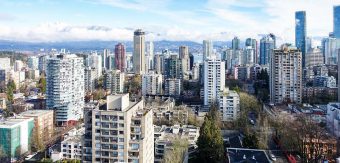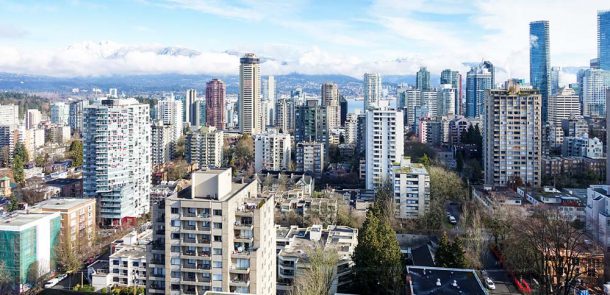Last updated on June 22, 2023
Some of us have been feeling his for awhile, but according to new data, the Canadian Rental Housing Index has confirmed that 16 per cent of renters in B.C. spend more than 50 per cent of their income to cover rent and utilities. A number that puts them at an increase risk of homelessness. With the cost of rend increasing by 30 per cent over the last five years, it’s leaving people wondering if there’s anything they can do to stay in their current rental homes.
In response to this crisis, we’ve been advocating for investment in affordable housing, and supporting members of our community who are struggling to find a place to call home. As a member of Vancity, your money goes towards the Vancity Affordable Housing Accelerator Fund. Since its launch in 2011, we’ve created 4,407 units of affordable rental housing, granted 81 loans to community organizations, and put $31.5 million towards developing affordable housing.
So, what are the issues, and what options do people have for accessing affordable housing in our province?
We recently sat down with Jill Atkey, CEO of the BC Non-Profit Housing Association (BCNPHA) to shed light on the topic of housing affordability and the options for accessing affordable housing in BC. Read on to learn Jill’s insights.
The state of affordable housing in BC
Jill says that one of the biggest misconceptions the BCNPHA faces relates to who lives in affordable housing. While, in the past, housing insecurity was reserved for low-income earners, now even families earning a middle-class income can’t find affordable and adequate places to live. Everyone, from those looking for shelter-rate units ($375/month), to working professionals who make $120,000 per year, are affected by the affordable housing crisis.
“There is a common perception that people who live in affordable housing are low-income or they’re on some kind of social assistance,” says Jill. “But what we’re seeing now is that there’s a whole range of people who are being impacted.”
Where did all the affordable housing go?
Many factors have contributed to the lack of affordable housing in BC, but the problem basically stems from demand for affordable housing outstripping the available supply. A strong economy and job market have increased the demand for housing, reducing vacancy rates and driving up rents across the board, but income levels and rental supply have not kept up.
When we think about affordable housing, our minds often jump to social housing or non-market housing. But in BC, the majority of affordable rental housing is actually provided by the private market — by landlords and rental companies. Much of this rental stock is aging or being removed from the market. And when these affordable units are lost, say to redevelopment or renoviction, they are rarely restored.
Over the last several decades, the cost of land has continued to rise combined with the elimination of many government incentives and funding for affordable rental housing development. This has led to a steep decline in the construction of purpose-built rental housing, including market, non-profit, and co-operative rental housing. With renewed government investment the past several years, there’s more construction underway for affordable rental housing going across BC and Canada, but there’s much work to do to ensure affordable housing is accessible to all.
To top it off, much of new development is focused on building smaller, denser, studio and 1-bedroom units. These make up approximately 80% of all new units being built in Vancouver. But for larger families or intergenerational families who often need two or three bedrooms, this type of development does little to meet their housing needs.
How to access affordable housing in BC.
As the need for affordable housing grows, the question becomes “how do you access affordable housing in BC?”
The answer, unfortunately, is not straightforward. Jill says, “Sadly, we have a very opaque system. Right now, there is no single source of truth to finding affordable housing. In an ideal world, there would be one website that could generate all of the information you need, but unfortunately, that’s not the case yet.”
While it may not be as easy as visiting a central website, there are still ways to access affordable housing in BC. Here are a few resources to guide you:
- BC Housing: The BC Housing website offers a range of information and support to help individuals and families – including senior citizens, persons with disabilities, low-income families, or those experiencing unique hardships – access affordable or subsidized housing. They also have a series of affordable rental housing listings that allow you to apply directly to buildings that accept tenant applications, and rental assistance programs that provide eligible, low-income, working families or seniors with monthly assistance with their monthly rent payments.
- AHMA Housing Listing: The Aboriginal Housing Management Association offers a list of Indigenous Housing Services and Providers across the province.
- VPL Housing Services: The Vancouver Public Library has put together a list of housing services in Vancouver and surrounding areas, including shelters, supportive housing, market rentals, and rental assistance.
- Local non-profits: A number of non-profit organizations provide affordable or below-market housing in BC, including Affordable Housing Societies, Catalyst Community Development Society, Brightside, and Metro Vancouver Housing. If you’re looking for housing in Vancouver specifically, here’s a list of Vancouver non-profit housing providers. On Vancouver Island, there’s Greater Victoria Housing Society and Capital Region Housing Corporation.
- Co-operative housing: Use the CHFBC co-operative housing search tool to find co-ops in your area. Many have waitlists, so be sure to sign up early to secure a spot.
- School resources: If you’re a student, you may be able to find affordable housing through your school’s housing office or off-campus housing services. Some schools can also provide lists of landlords who rent to students.
- Online listings: Look for secondary suites or empty apartments that owners are renting out. These can often be found on websites like Craigslist or Kijiji.
More ways to support affordable housing.
While our province has traditionally focused on building new rental supply, we also need to focus on what’s happening with the existing supply in our private sector. Old, three-storey walk-ups are being bought up by real estate investors, which quickly increases rent. Jill says the priority sale for these buildings should be given to non-profits to run as affordable housing.
Redevelopment is another way we can create more affordable housing stock in BC. By working with developers to include a mix of housing types and affordable units in their projects, we can help increase the supply of affordable housing and make it more accessible to those who need it.
It’s also important to encourage your elected officials to increase investment in affordable housing. And, when there’s an affordable housing project going through a public hearing, get out and support it. Jill says this process can be challenging, due to misconceptions about affordable housing and the people who need it, and the voices in the room really matter.
Vancity’s role in improving affordable housing access.
As an organization, we know we can’t solve the systemic issue of affordable housing alone, but we also know that accepting the status quo has never been our standard. That’s why we’re working alongside our community partners to increase access to affordable, sustainable housing in BC and across Canada.
We’ve been proud supporters of the BCNPHA for the last decade, and continue to support their efforts to advocate and influence policy related to affordable housing and to help strengthen non-profit sector capacity.
We’ve also worked alongside our community partners, Vancity Community Foundation and Vancity Community Investment Bank, to help improve access to affordable housing in BC as well. This includes our Co-op Housing Interest Pool and the Vancity Affordable Housing Accelerator Program & Fund, which is managed by Vancity Community Foundation and provides grants and loans to non-profits, co-operatives, and Indigenous-led organizations for the acquisition, development, and redevelopment of affordable housing. Our recently launched Non-Profit Energy Retrofit Program supports non-profit housing providers to plan climate-friendly retrofits that put their buildings on a pathway to net-zero and climate resilience.
And, as always, a portion of our members’ deposits is lent to affordable and sustainable housing projects that align with our values. Shared Success grants go towards affordable housing projects, too. We’re proud to be working alongside our members to bring more affordable housing to market, and we’ll continue to work hard to make sure that everyone has a place to call home.








